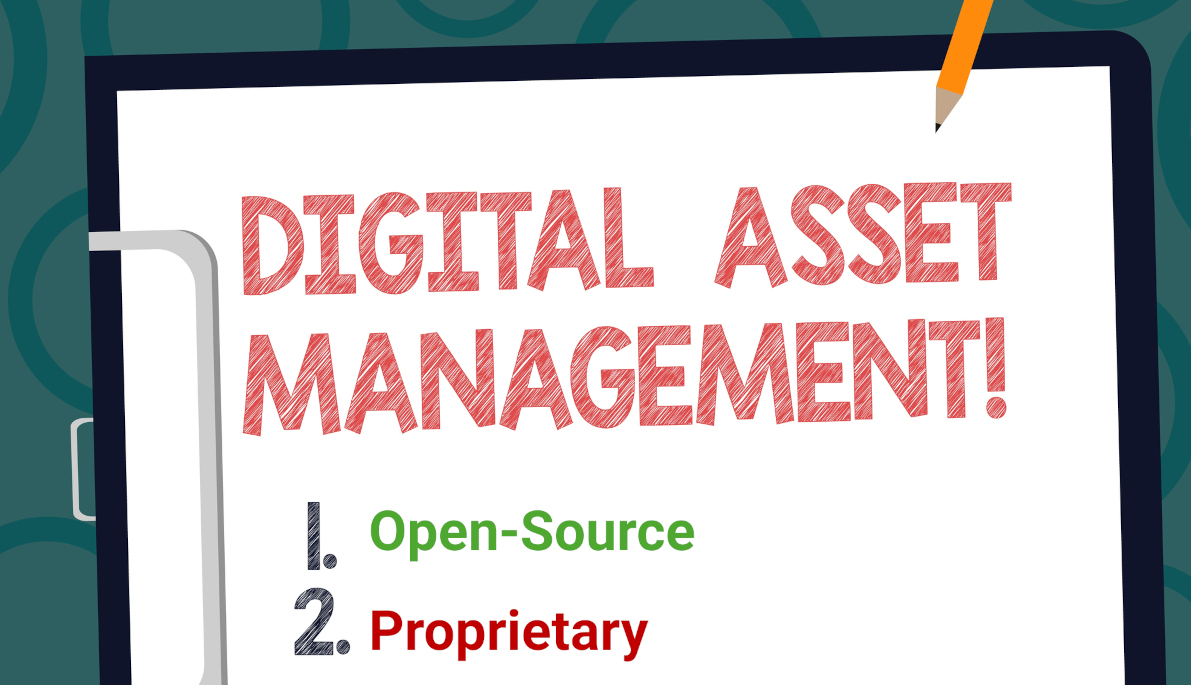The need for digital assets, such as images and especially video content, in 2025 is undeniable for industries centered around products and consumer engagement. Additionally, the amount of digital data that employees work with is constantly increasing and is often scattered across different systems. Therefore, many employees find it hard to locate, retrieve, and modify the digital assets they have to work with. Studies showed, marketing teams, on average, wasted approximately 7 hours each week due to duplicated work processes.
At the same time, 83% of consumers want to see more video content from brands in 2025. The solution to the problem is, of course, Digital Asset Management (DAM) - the software designed to organize, store, retrieve, manage, and distribute digital assets. In this article, we will focus only on the open-source DAM solutions, analyse their specifics, and available options that help businesses thrive in the competitive digital field of 2025.
Who Needs Their Digital Asset Management to be Open-Source
Like other open-source solutions, open-source DAM is a growing trend, favored for scalability, customization, and cost-effectiveness, with a strong market growth forecast. Like any other open-source software, open-source DAM systems are built on a foundation of publicly available source code that allows users to view, modify, and enhance the software. Yet it does not fit everyone. Open-source DAM could be a great solution for your business if:
- You have strong IT/Dev teams who can install, configure, and customize the DAM in-house.
- Your business has complex or unique asset workflows, and you want to customize your DAM to fit non-standard processes.
- You are a global retail and e-commerce brand doing multi-channel marketing
- You deal with large product catalogs and region-specific campaigns
- You are focused on privacy and compliance and want full control over infrastructure and data for meeting legal or security requirements.
- You are a creative agency and need flexible tools and creative workflows, often on a per-project basis.
- You are avoiding vendor lock-in and want long-term autonomy over tech stacks and data formats.
If you check more than one box at once, you should proceed with reading and explore the available open-source DAM options.
Comparing Open-Source DAM Solutions
| Feature / Platform | ResourceSpace | Pimcore DAM | Razuna | EnterMedia | Nuxeo DAM | AtroCore |
|---|---|---|---|---|---|---|
| Core Focus | Pure DAM | DAM + PIM + MDM | Lightweight DAM | Cloud-focused DAM | Enterprise-grade DAM | Modular Part of the Data Platform |
| Metadata Management | Custom fields | Strong, structured | Basic | Advanced | Highly configurable | Taxonomy-based, flexible |
| Search & Filtering | Advanced | Fast & faceted | Smartfolders | Advanced | Fuzzy + proximity | Robust search options |
| Workflow Automation | Collections/workflow | Publishing workflows | Workflow hooks | Workflow support | Full BPM support | Asset lifecycle automation |
| Media Support | Excellent for images | Cross-channel assets | Standard | Web and cloud files | Broad (media, docs) | Images, videos, 3D, etc. |
| Integrations | Adobe, marketing tools | PIM, MDM, CMS | API, LDAP | Google Drive, Dropbox | Cloud & creative tools | CMS, ERP, social media |
| UI/UX | Clean, customizable | Modern, dashboard-style | Simple | Branded/custom themes | Enterprise UI | SPA with mass upload |
| Mobile Access | ✅ Yes | ✅ Yes | Basic | ✅ Yes | ✅ Yes | ✅ Yes |
| Hosting Options | Self + 10GB free cloud | Self-hosted/cloud | Self-hosted | Cloud-first | Self or hybrid | On-prem or cloud |
| Cost | Free | Free (enterprise features extra) | Free | $50/TB cloud option | Free, but enterprise setup cost | Free core, enterprise support available |
| Ideal For | Nonprofits, cultural orgs | Enterprises with integrated needs | Small teams, simple use cases | Cloud-based teams, media-heavy use | Large enterprises, regulated industries | Mid-sized orgs needing modular DAM |
What to Look for in DAM
When choosing the functional DAM for your business, there are some core features that are a must for all well-designed, full-featured DAM systems, whether open-source or proprietary. These are:
1. Storage Layer
At the heart of any DAM system is the storage layer, which is where your digital assets — such as images, videos, audio files, and documents—are physically stored. Open-source DAM platforms usually support different storage methods, including on-premises servers, cloud storage services like Amazon S3, or a combination of both. This layer not only stores the original files but also manages different versions, renditions, and previews needed for various uses across an organization.
2. Metadata and Database Management
Metadata is used for organizing and retrieving digital assets. Most DAM systems use structured databases to store metadata, which includes information like file names, sizes, descriptions, keywords, usage rights, and more. Many systems also support custom metadata fields, which allow businesses to tailor how they categorize and track their content. Additionally, metadata can often be extracted automatically from files, which reduces manual effort.
3. Processing and Transformation Engine
A functional DAM solution automatically creates previews and thumbnails for browsing, converts files into different formats, and generates renditions suited to specific platforms or outputs. It can also extract embedded metadata from files or apply visual modifications like watermarks when needed. This engine ensures that assets are ready for immediate use across multiple channels without manual editing.
4. Search and Retrieval System
A strong search function is critical in any DAM system. Explore if the DAM you're considering provides full-text search across metadata and, in some cases, the content of files themselves. Users can apply filters to narrow results by file type, date, tags, or other metadata fields. Many systems also support saved searches and curated collections for quicker access to frequently used assets. Advanced options include visual search, which uses image recognition to find similar files.
5. User Interface and Experience Layer
The user interface is what users interact with day-to-day, so clean, intuitive layouts with features like drag-and-drop uploads, customizable dashboards, and flexible folder structures matter a lot. Many are also designed to work across devices, and are accessible on desktops, tablets, and mobile phones.
6. Access Control and Security Framework
DAM systems use role-based access control to define who can view, edit, download, or delete assets. Features like audit logs record all user activity, while authentication systems ensure only authorized users gain access. Encryption for both stored data and data in transit adds another layer of protection.
7. API and Integration Layer
Open-source DAM platforms typically need to be integrated with other tools within your organization. Through APIs (application programming interfaces), the DAM can connect to content management systems, creative software like Adobe Creative Cloud, e-commerce platforms, and enterprise tools such as PIM or ERP systems.
Key Takeaways
Open-source DAM systems provide flexible, customizable solutions for storing and managing digital assets. They offer strong metadata handling, automated processing, and powerful search features. With intuitive, accessible interfaces and solid security, they support integration with other business tools via APIs. Open-source DAMs are ideal for organizations with skilled IT teams looking for control, scalability, and cost savings without vendor lock-in.



